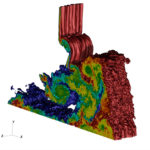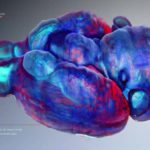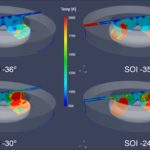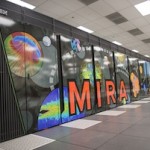In this podcast, the Radio Free HPC team discuss whether ZFS is ever going to meet its potential. “Henry weighs in on the evolution of ZFS and how his opinion of ZFS has changed over the last decade or so. Both Shahin and Henry feel ZFS is unique and highly useful and that maybe Linus isn’t up on current ZFS capabilities.”
Video: Supercomputing the Secrets of Giant Stars
In this video, supercomputing power and algorithms help astrophysicists untangle giant stars’ brightness, temperature, and chemical variations. “As a star becomes redder (and cooler), it becomes more variable. That’s a pretty firm prediction from what we’ve found, and that’s going to be what’s exciting to test in detail.”
HPC I/O for Computational Scientists
Phil Carns from Argonne gave this talk at the 2017 Argonne Training Program on Extreme-Scale Computing. “Darshan is a scalable HPC I/O characterization tool. It captures an accurate but concise picture of application I/O behavior with minimum overhead. Darshan was originally developed on the IBM Blue Gene series of computers deployed at the Argonne Leadership Computing Facility, but it is portable across a wide variety of platforms include the Cray XE6, Cray XC30, and Linux clusters. Darshan routinely instruments jobs using up to 786,432 compute cores on the Mira system at ALCF.”
DOE’s INCITE Program Seeks Advanced Computational Research Proposals for 2018
Today the Department of Energy’s Innovative and Novel Computational Impact on Theory and Experiment (INCITE) program announced it is accepting proposals for high-impact, computationally intensive research campaigns in a broad array of science, engineering, and computer science domains. DOE’s Office of Science plans to award over 6 billion supercomputer processor-hours at Argonne National Laboratory and […]
Argonne Annouces Early Science Projects for Aurora Supercomputer
Argonne has selected 10 computational science and engineering research projects for its Aurora Early Science Program starting this month. Aurora, a massively parallel, manycore Intel-Cray supercomputer, will be ALCF’s next leadership-class computing resource and is expected to arrive in 2018. The Early Science Program helps lay the path for hundreds of other users by doing actual science, using real scientific applications, to ready a future machine. “As with any bleeding edge resource, there’s testing and debugging that has to be done,” said ALCF Director of Science Katherine Riley.
Video: Stunning Simulation from Blue Brain Project at SC16
In this silent video from the Blue Brain Project at SC16, 865 segments from a rodent brain are simulated with isosurfaces generated from Allen Brain Atlas image stacks. For this INCITE project, researchers from École Polytechnique Fédérale de Lausanne will use the Mira supercomputer at Argonne to advance the understanding of these fundamental mechanisms of the brain’s neocortex.
Supercomputing Better Engines at Argonne
Researchers are using Argonne supercomputers to jump-start internal-combustion engine designs in the name of conservation. “Improving engine efficiencies by even a few percentage points can take a big chunk out of our carbon footprint. We are working on a proof-of-concept to demonstrate how simulating several thousand engine configurations simultaneously can really help engineers zero in on the optimum engine designs and operating strategies to maximize efficiency while minimizing harmful emissions.”
Supercomputing Supernova Explosions on Mira
Researchers from Michigan State University are using the Mira supercomputer to perform large-scale 3-D simulations of the final moments of a supernova’s life cycle. While the 3-D simulation approach is still in its infancy, early results indicate that the models are providing a clearer picture than ever before of the mechanisms that drive supernova explosions.
Slimming Down Supercomputer Power Bills
Any performance improvements that could be wrung out of supercomputers by adding more power have long been exhausted. New supercomputers demand new options that will give scientists a sleek, efficient partner in making new discoveries such as the new supercomputer called Summit that’s being developed and is to arrive at Oak Ridge National Lab in the next couple of years. “If necessity is the mother of invention, we’ll have some inventions happening soon,” says deputy division director of Argonne Leadership Computing Facility Susan Coghlan.
Supercomputing van der Waals Forces on Mira
Over at ALCF, Katie Jones writes that researchers are using the Mira supercomputer to validate a new “wave-like” model of the van der Waals force—a weak attraction that has strong ties to function and stability in materials and biological systems.












